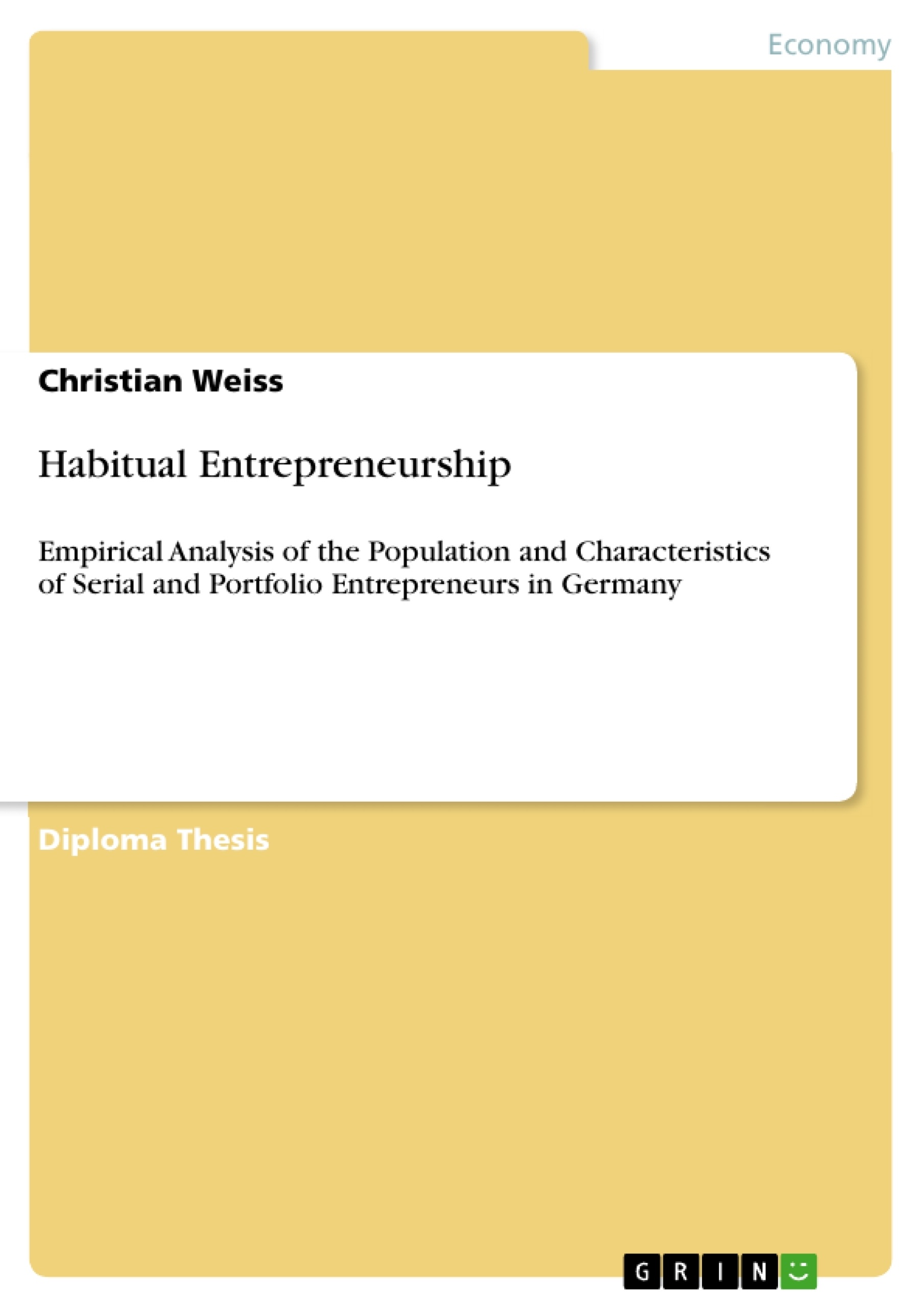Despite its apparent economic importance and increasing scientific devotion, the field of entrepreneurship within the area of business sciences is quite young. However, in the last decades research in the respective areas has grown rapidly, meanwhile providing a considerable and presentable coverage of different topics and areas, having brought forward several theories and concepts. Nevertheless, there are still many blank fields left which urge for exploration. For example, politicians cannot foster entrepreneurship in the most efficient way, as there is no general agreement which group of entrepreneurs or type of ventures are the most welfare gaining ones. Also, neither is it clear yet which entrepreneurial abilities are the most important ones, nor how they can be acquired or conveyed.
Generally, acknowledged scholars as Shane/Venkataraman (2000) postulate to focus the research on the actual core of entrepreneurship, the entrepreneur himself. In accordance with this point, several authors further have agreed on focusing on multiple founders, so-called habitual entrepreneurs, supposably providing the best insights and the most valuable information about the field of entrepreneurship. As one of the precursors to this idea, MacMillan expressed that researching anything else than habitual entrepreneurs actually leads to misleading results and besides, in any other research area, it is always the professionals and/or power users acting as the research objects. More recently, Sarasvathy introduced a further extension of the concept: entrepreneurial re-search should shift its focus from the singular relation between one firm and the entrepreneur to a multilateral one. Thus, the firms are to be considered instruments of the entrepreneur who is the actual research object of the present study.
Hence, the aim of this explorative study is to reduce the gaps in the research area of entrepreneurship, allowing for the above-mentioned concepts. This is accomplished by firstly providing another step into the direction of a comprehensive and widely accepted typology. Secondly, a thorough literature review of the actual state of research is provided. Thirdly, an empirical analysis will help to improve the general understanding of entrepreneurship as well as habitual entrepreneurs in Germany. The actual research perspective is three-fold, shedding light on the population and characteristics as well as performance of German habitual entrepreneuars and their ventures.
Inhaltsverzeichnis (Table of Contents)
- INTRODUCTION
- PROBLEM STATEMENT AND RESEARCH OBJECTIVE
- STRUCTURE OF THE THESIS
- CONCEPTS
- TYPOLOGY OF ENTREPRENEURS
- Serial Entrepreneurs
- Portfolio Entrepreneurs
- Fallen Entrepreneurs
- HABITUAL ENTREPRENEURS
- THEORETICAL FOUNDATION
- LITERATURE REVIEW
- Population of Habitual Entrepreneurs
- Characteristics of Habitual Entrepreneurs
- Performance of Habitual Entrepreneurs and their Ventures
- THEORETICAL FRAMEWORK
- ANALYTICAL SET-UP
- Premises
- Dependent Variables
- Independent Variables
- EMPIRICAL ANALYSIS
- RESEARCH DESIGN
- DATA COLLECTION
- DECLARATION OF VARIABLES
- ANALYSIS
- Sequence of the Analysis
- Methods of Analysis
- RESULTS
- Sample Comparison
- Population of Habitual Entrepreneurs in Germany
- Characteristics of Habitual Entrepreneurs in Germany
- Performance of German Habitual Entrepreneurs and their Ventures
- INTERPRETATION AND DISCUSSION
- Quote paper
- Christian Weiss (Author), 2007, Habitual Entrepreneurship, Munich, GRIN Verlag, https://www.grin.com/document/145548



